
B-16 - HOW TO CONDUCT ACTION RESEARCH BASED ON TEACHING PRACTICES
1- What is action research ?
Action research, in general, is:
- a form of disciplined inquiry which teachers, instructors, and supervisors use to explore matters and issues related to learning student and teacher effectiveness;
- associated with improving learning and professional growth;
- communicating research results derived from real-life experiences.
More specifically, action research is a type of inquiry that is:
- practical because it leads to change in the teaching/learning practices;
- theoretical because it stems from a theoretical perspective leading to new insights;
- collaborative as it encourages engagement with others in the process;
- reflexive as it requires practitioner researchers to keep their own knowledge, values, and professional activities under review;
- contextual as it acknowledges institutional, national and societal influences.
In higher education, action research has been:
- associated with studies related to a range of issues and challenges in higher education, institutional development, curriculum development, and innovative and critical pedagogies.
- identified to typically include stages that encourage practitioners to:
- Look at their practice and assess where change may be valuable
- Explore the context in which they are operating
- Identify possible actions to enhance practice
- Implement an action
- Systematically evaluate the action
- Articulate learning from the process
- Re-assess practice and consider opportunities for a further cycle of research
2- What are action research principles, purposes and models ?
The principles of action research highlight an evidence-based method for improving teaching and learning. As such, action research:
- is a research-based approach to look at one’s teaching practices and examine whether they are as expected to be.
- is a type of reflection on teaching learning practices that is critical and objective.
- investigates the effectiveness of teaching practices from collected and analyzed data not only on how to improve teaching and learning but also about how the researchers learned to improve their teaching practices.
Researching While Teaching (RWT), another label for action research, has multiple purposes; it can help instructors to:
- study in-depth issues about a practice-based topic such as interactive lecturing methods, assessment, rubrics or teaching through technology.
- conduct collaborative studies which result in the common welfare of the program and student learning
- continually review beliefs, values and assumptions.
- enhance their motivation and efficacy.
- professionalize teaching.
There are different models to conduct action research. Some of these models promote the cyclical approach, others focus on the reflection process and making alternative steps accordingly while others present a simple and linear process leading to results and an action plan for improvement (see appendix). In this paper, our focus is Model 1.
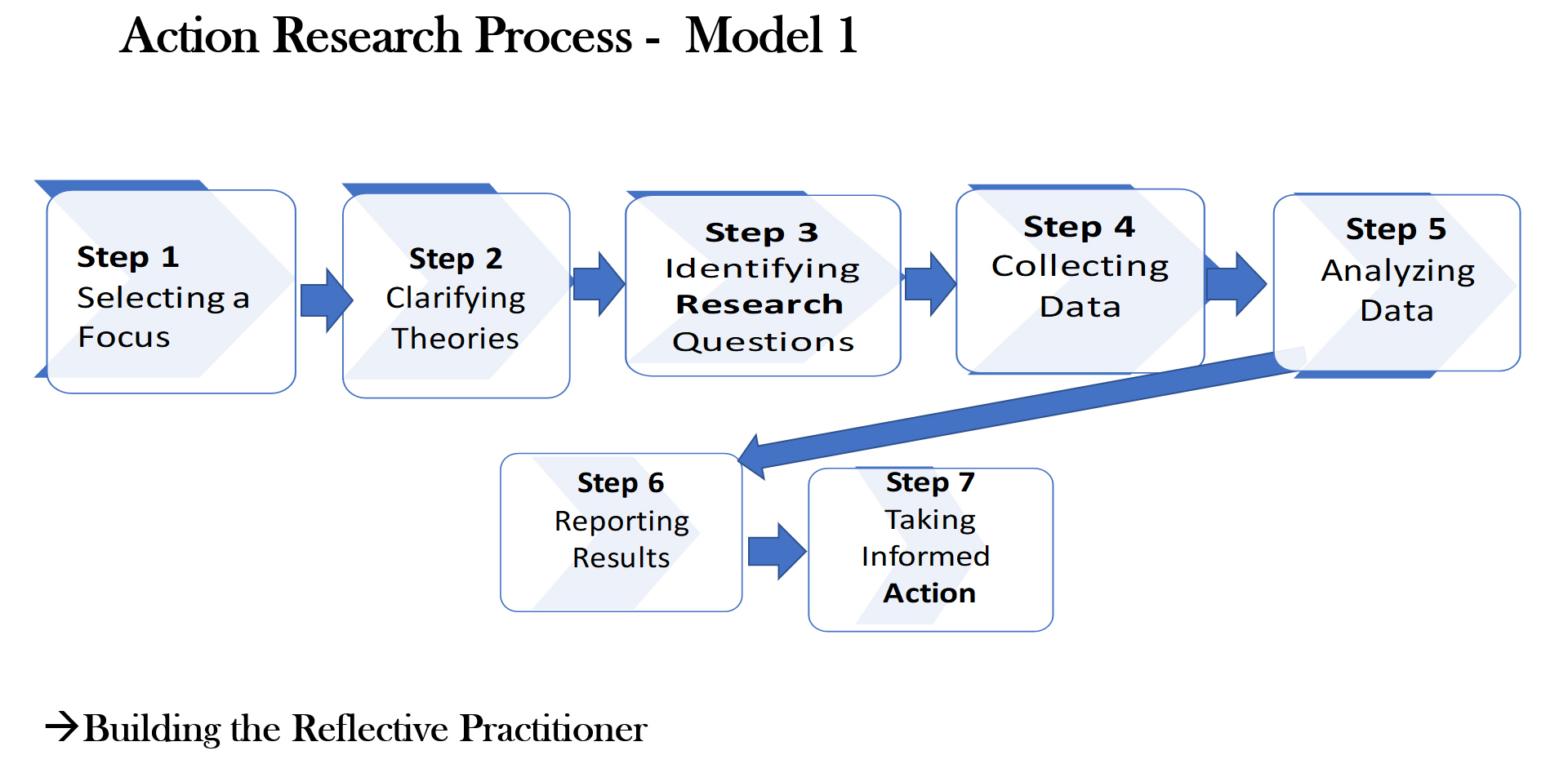
Action Research Process - Model 1
3- How do we implement action research, Model 1 ?
There are seven steps recommended to complete model 1. Educational action research can be conducted by a single instructor, a group of colleagues who are interested in a common problem, or by the entire faculty or a school.
The seven steps that action research advocates are an endless cycle of inquiry for the researcher. These steps are consistently implemented in the following sequence:
- Selecting a focus
- Clarifying theories
- Identifying research questions
- Collecting data
- Analyzing data
- Reporting results
- Taking informed action
Selecting a focus starts with the action researcher’s asking: What element(s) of our practice or what aspect of student learning do we wish to investigate? The action research process leads to a serious reflection to determine a topic (or maybe topics) worthy of a busy faculty’s time which assures the researcher that such inquiry would contribute to making the instructor’s teaching more effective and satisfying.
When selecting the topic, researchers need to consider that they are passionate about the topic and that it relates primarily to their own research interests; that the topic is clear and can be understood by different types of readers, in the field and outside the field; that the topic is precisely based on facts and supported with examples and reputable references and finally that the topic is innovative and addresses an issue from different perspectives.
The second step is basically identifying the beliefs and theoretical perspectives and/or framework the researchers hold in relation to their focus. For example, if instructors are concerned about increasing responsible classroom behavior in their classes, it will be helpful for them to begin by clarifying which approach they feel will work best in helping students acquire responsible classroom behavior habits.
Once a focus area has been selected and the researcher’s perspectives and beliefs about that focus have been clarified, the next step is to generate a set of personally meaningful research questions to guide the inquiry. Qualities of a good research question should, hence, be considered, such as the following:
- Is the research question grounded in a theoretical framework?
- Does the research question build on, but also offer something new to, previous research?
- Does the research question have potential to suggest directions for future research?
- Is the research question a purpose or question that the researcher is sincerely interested in and/or invested in?
- Does the research question address directly or indirectly some real problem in the world?
- Does the research question take ethical issues into consideration?
- Does the research question clearly state the variables or constructs to be examined?
- Does the research question avoid biases in terminology or position?
- Does the research question have multiple possible answers?
- Is the research question simple, or at least manageable?
- Does the research question drive the study design?
- Action researchers should make sure that the data used are valid and reliable. Instructors must demonstrate that the lessons drawn from the data clearly relate to the context and characteristics of their classroom.
- In order to ensure reasonable validity and reliability of findings, action researchers should seek a process known as triangulation. Triangulation is basically employing multiple independent data collection sources to answer one’s action research questions.
- The key to managing triangulated data collection is (1) to be effective and efficient in collecting research data which is already present in the classroom, and (2) to identify other sources of data that effectively ensue from tests, classroom discussions, or questionnaires.
Selecting Data Collection Methods: Triangulate
Direct Measures look at the actual student work (assignments or exams) that can be used to directly measure students’ knowledge and skills
Examples:
- Pre-test, post-test,
- Comprehensive subject matter exam,
- Licensure exam, standardized tests
- Portfolio,
- Thesis,
- Embedded assignments,
- Exit Exam,
- Capstone Assignment,
- Performance Demonstration (recital, art exhibit, or science project)
- Case Studies
Indirect Measures refer to the type of data that can be used to infer students’ knowledge and skills
Examples:
- Surveys (Exit, alumni, employer, graduates of program etc.)
- Interviews,
- Focus Group Studies,
- Instructor Course Evaluation,
- Students’ Self-Reports/reflections
- Observations
- Transcript Analysis
Qualitative – Quantitative Research
Action researchers can employ qualitative, quantitative research procedures or a combination of both, a decision made based on the nature of the research question(s).
Qualitative Research
- Qualitative research is empirical research where data are not in the form of numbers.
- Qualitative research is multimethod which involves an interpretive and naturalistic approach. This means that qualitative researchers study phenomena in their natural settings attempting to make sense in terms of the meanings people bring to them. (Denzin and Lincoln, 1994, p. 2)
- Qualitative research aims at understanding the social reality of individuals, groups and realistically and as its participants experience it. This translates into studying people and groups in their natural setting or context.
- Qualitative research follows the exploratory approach and seeks to explain “how” and “why” a certain phenomenon, or behavior, is exhibited as it does in a particular context.
Quantitative Research
- Quantitative research collects data in a numerical form which can be categorized, or rank ordered, or measured in units of measurement. In this type of data collection, graphs and tables of raw data can be constructed.
- Quantitative researchers seek to establish general laws of behavior and phenomenon across different contexts. Research is used to test a hypothesis and ultimately support or reject it.
- Statistical analysis helps researchers turn quantitative data into usable and generalizable results that would help in decision making the area of research. We can use statistics to summarize our data, describing patterns, relationships, and connections.
- For the action researcher, a number of user-friendly procedures can be used to help a practitioner identify trends and patterns obtained from the action research data.
- During this phase in the seven-step process, instructor-researchers will methodically sort, sift, rank, and examine their data to reflect on two questions:
- What is the story told by these data?
- Why did the story play itself out this way?
- What evidence do I have?
- By answering these three questions, the instructor-researchers can acquire a better understanding of the phenomenon under investigation and as a result can produce theory grounded in sound research about what might be done to improve the researched issue.
- Reporting and publicizing action research usually occur in informal settings which are typically less intimidating than the traditional venues for other types of scholarly research.Faculty meetings, brown bag lunch seminars, and teacher conferences are among the most common venues for sharing action research with peers.
- It should be noted however that each year instructor-researchers are increasingly presenting their work for publication or even as part of graduate programs requirement fulfillment.
- It should be noted here that regardless of which venue researchers select for reporting on their action research, they are definitely contributing to a collective knowledge base regarding teaching and learning.
- Although all teaching can be classified as trial and error, action researchers find that the research process liberates them from continuously repeating their past mistakes.
- Based on findings from their action research, instructor-researchers publicize these findings and provide recommendations to improve the teaching/learning practices.
- With each refinement of practice, action researchers gain valid and reliable data on their developing skills.
4- How do we implement action research, Model 1?
To conclude this module, a brief presentation on measuring the quality of action research is addressed. When measuring a piece of action research, it is essential to identify what is being judged: the quality or impact, and how it is being judged: criteria or standards. Below are quick pointers to differentiate between research quality, research impact, research criteria, and research standards.
- Research Quality → making judgement based on our values
- Research Impact → criterion in judging quality by evidence of change
- Research Criteria → what we expect to see; later this turns into standards
- Research Standards → how we judge quality based on benchmarking quality and excellence
Three sample checklists are generated below that can be used as a startup for reviewing a piece of action research:
Criteria for Judging Action Research Sample 1
| Criteria | Done | Not yet |
|---|---|---|
| 1. ‘Knowledgeable’ outsider (who has sufficient information to judge whether the research is relevant to their situation) did first review. | ||
| 2. Outcomes of the action research carefully scrutinized by professional peers (to validate the outcomes authenticity so that wider applications by ‘nonknowledgeable’ outsiders can be made with confidence = the trust put in the competence of statistical expertise in verifying traditional social science research). | ||
| 3. The transparency of the research process is verified. |
The Seven Choice points for Quality in Action Research used in ARJ Sample 2
| Criteria | 4 | 3 | 2 | 1 | Comments and Evidence |
|---|---|---|---|---|---|
| 1. Partnership and participation (collaborative) | |||||
| 2. Contribution to Action Research theory/ practice (contextual, theoretical, practical) | |||||
| 3. Methods and process (validity, reliability, triangulation) | |||||
| 4. Actionability & manageability (practical) | |||||
| 5. Reflexivity (reflexive) | |||||
| 6. Significance (contextual) | |||||
| 7. Invitation to ARJ stakeholders | |||||
| 4=Accept 3=Accept with minor changes
2= Accept with major changes 1= reject |
Total Score: /4 | ||||
Criteria for Judging Action Research Sample 3
| Criteria | 4 | 3 | 2 | 1 | Comments and Evidence |
|---|---|---|---|---|---|
| 1. Makes original contribution to knowledge in the field | |||||
| 2. Demonstrates critical engagement | |||||
| 3. Contains material worthy of publication | |||||
| 4. Engages with appropriate literatures | |||||
| 5. Is of appropriate technical merit | |||||
| 6. Document is error free (content & language) | |||||
| 4=Accept 3=Accept with minor changes 2= Accept with major changes 1= reject |
Total Score: /4 | ||||
Appendix
Action Research Process – Models
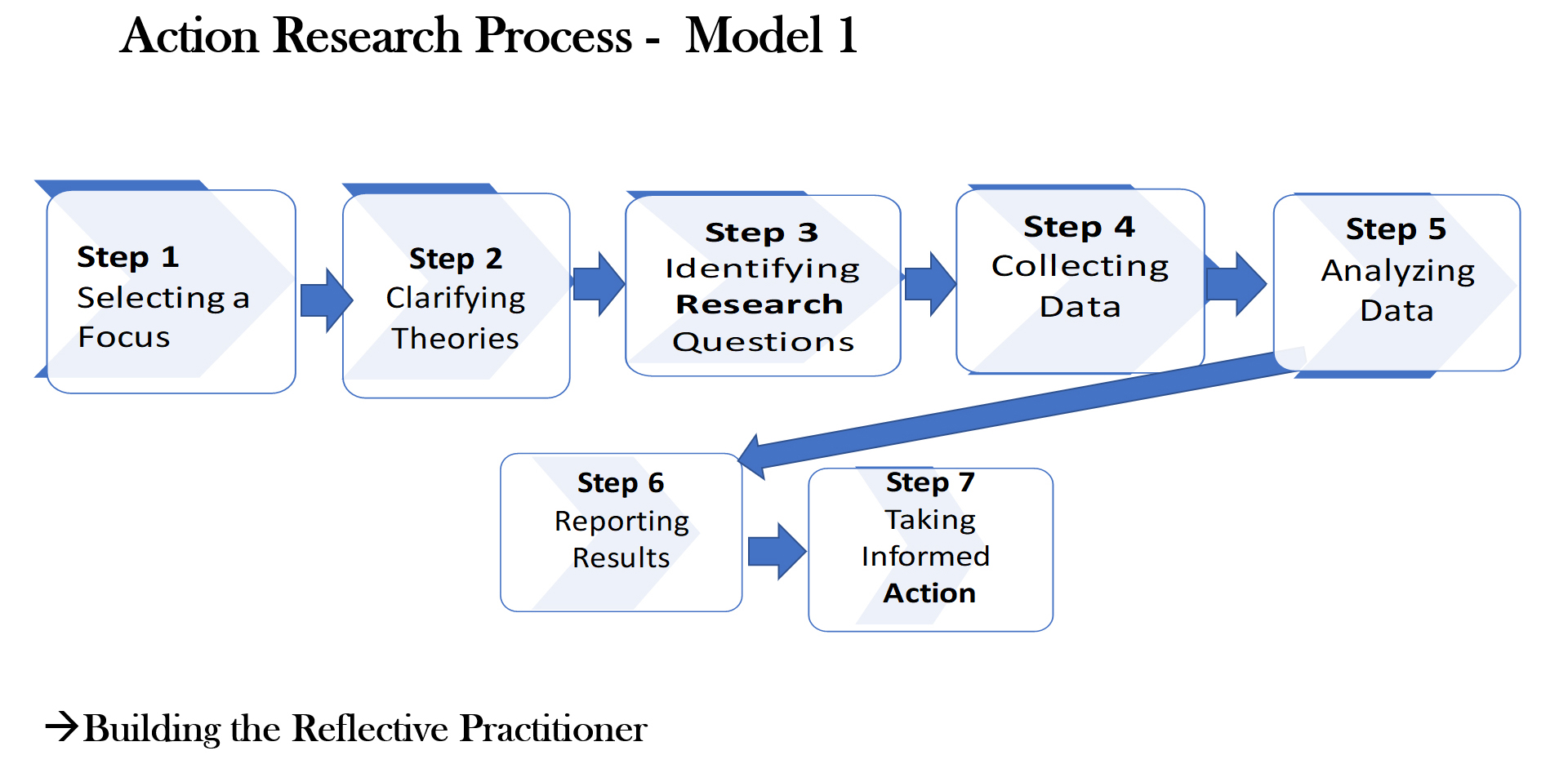
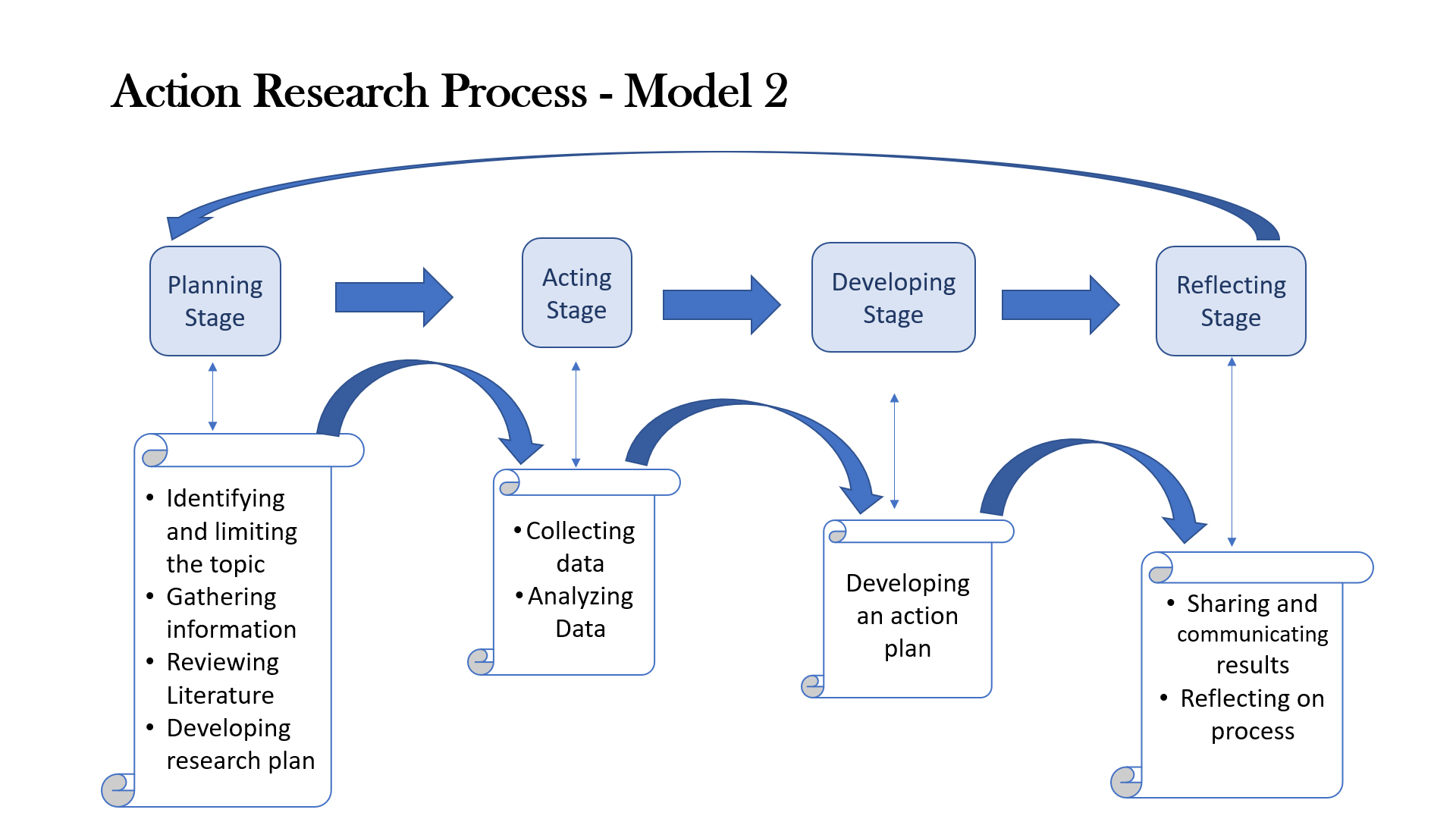
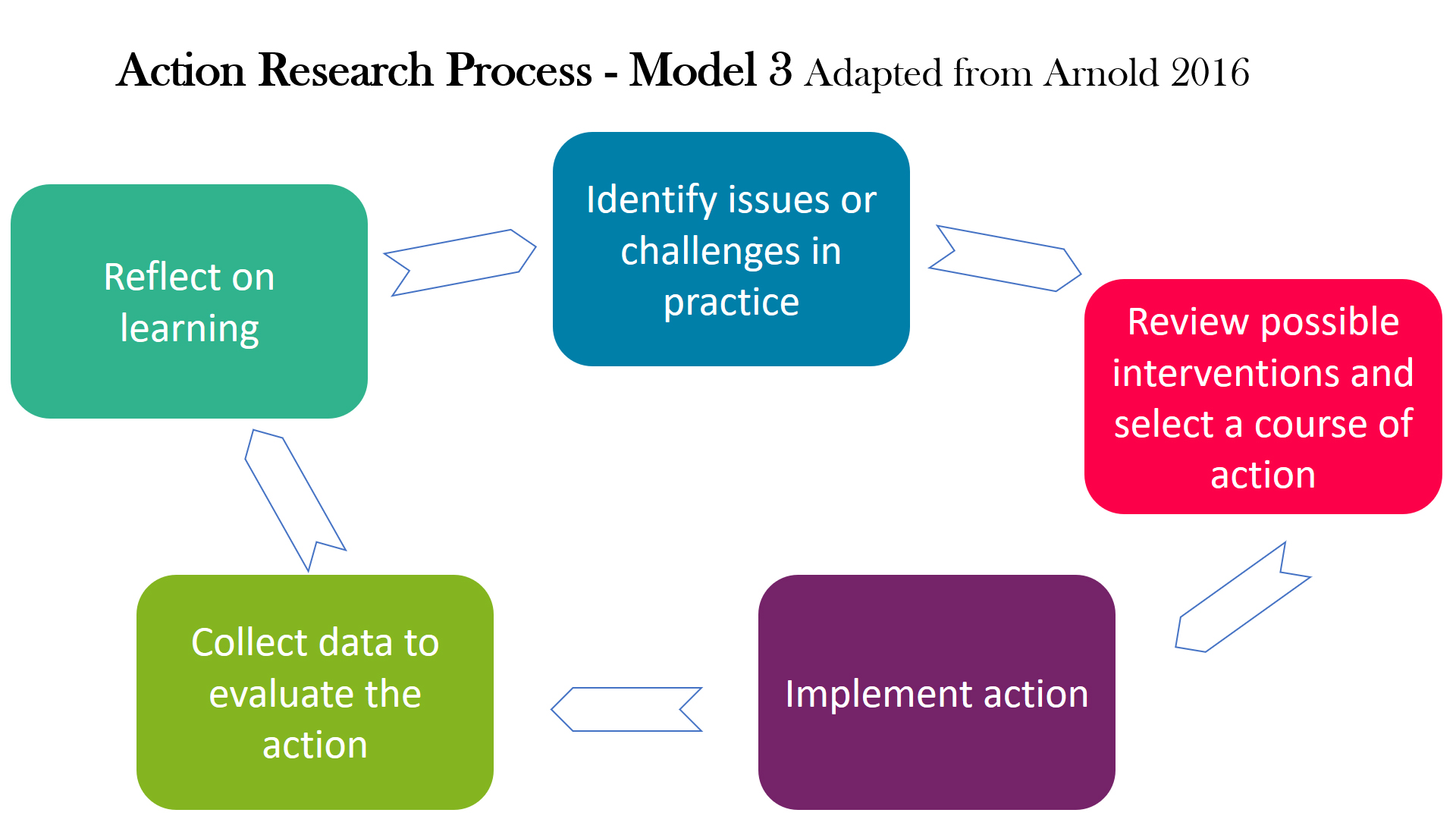
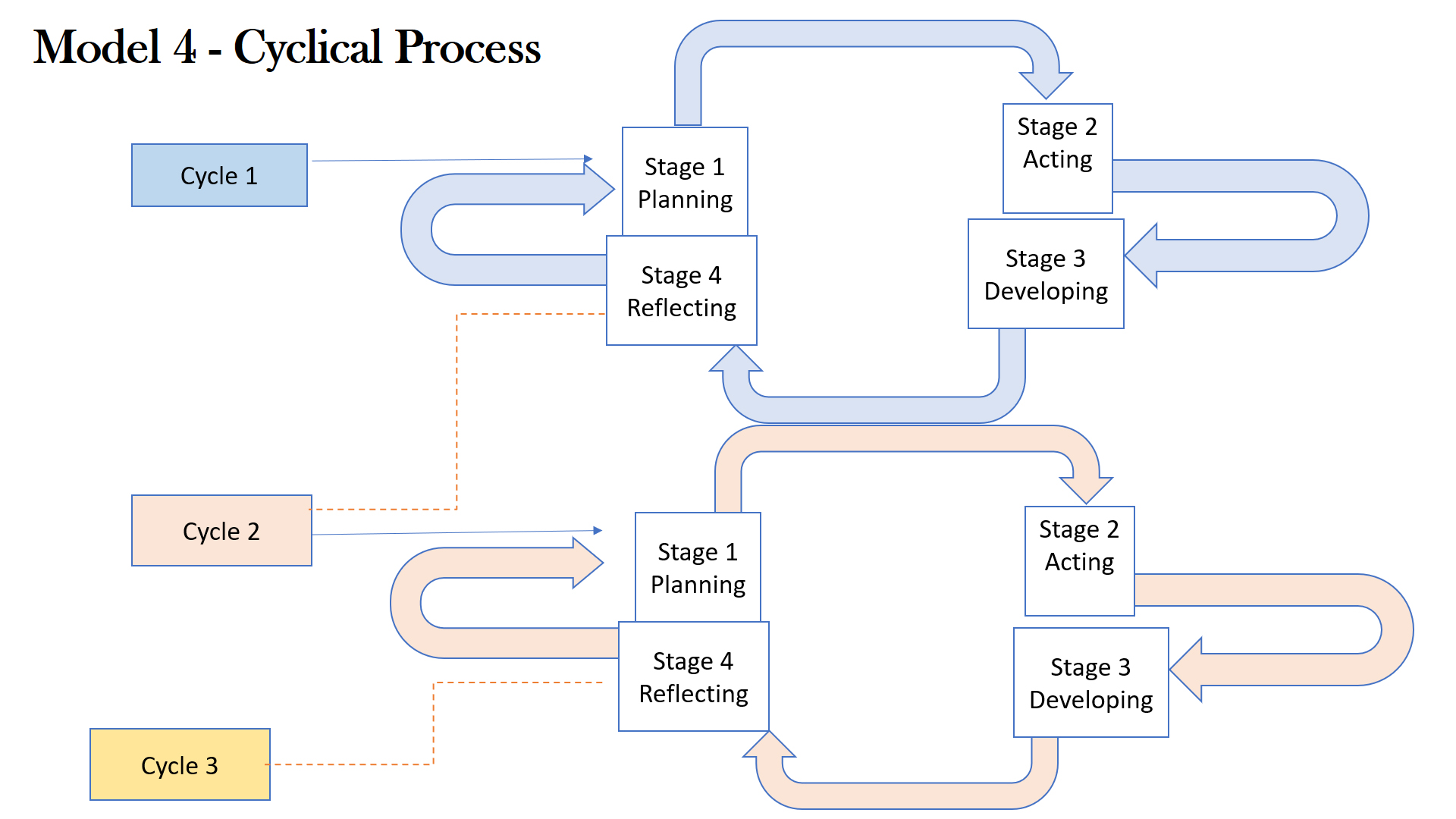
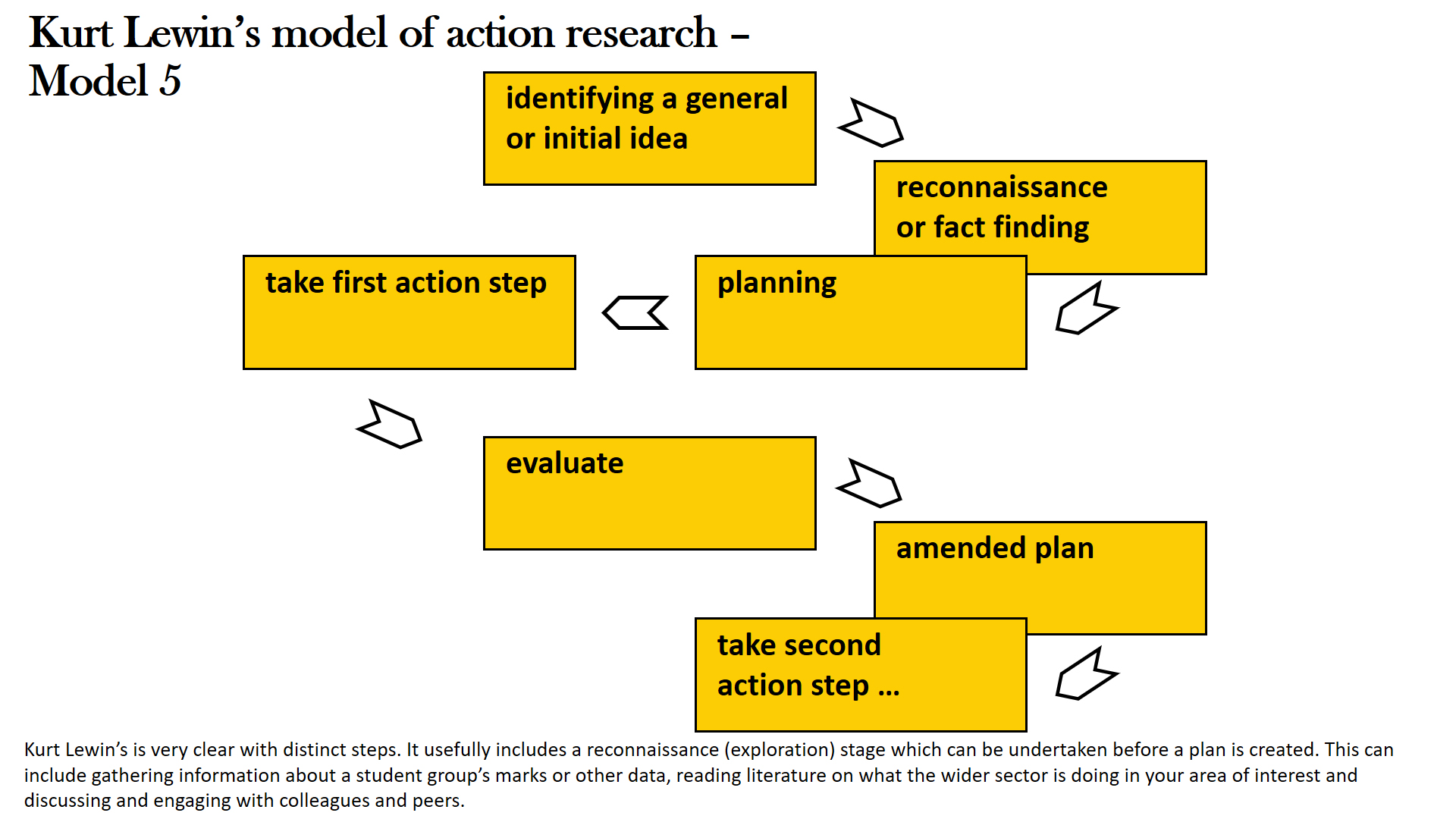
5- Pour en savoir plus
- McNiff, J. (2013). Action Research Principles and Practice,Routledge: NY,US
- Gibbs, Paul; Cartney, Patricia; Wilkinson, Kate; Parkinson, John, Sheila; Carl James- Reynolds, Cunningham; Zoubir, Tarek; Brown, Venetia; Barter, Phil; Sumner, Pauline; MacDonald, Angus; Dayananda, Asanka & Alexandra Pitt (2017). Literature review on the use of action research in higher education, Educational Action Research, 25:1, 3-22, DOI: 10.1080/09650792.2015.1124046
- http://www.ascd.org/publications/books/100047/chapters/What-Is-Action- Research%C2%A2.aspx
- https://s3.eu-west-2.amazonaws.com/assets.creode.advancehe-document-manager/ documents/hea/private/hub/download/AR%20Guide_1568037589.pdf
- https://www.tandfonline.com/doi/pdf/10.1080/03075079212331382786
- https://s3.eu-west-2.amazonaws.com/assets.creode.advancehe-document-manager/ documents/hea/private/hub/download/AR%20Guide_1568037589.pdf
- https://www.tandfonline.com/doi/pdf/10.1080/09650799400200006
- https://www.researchgate.net/publication/264233219_Stern_T_2014_What_Is_ Good_Action_Research_Considerations_About_Quality_Criteria_In_T_Stern_A_ Townsend_F_Rauch_A_Schuster_Eds_Action_Research_Innovation_and_Change_ International_perspectives_across_dis
- https://lydiaarnold.files.wordpress.com/2015/02/action-research-introductory-resource.pdf
- https://lydiaarnold.files.wordpress.com/2015/02/action-research-introductory-resource.pdf
- https://edusson.com/blog/research-paper-topics
- https://www.brown.edu/academics/education-alliance/sites/brown.edu.academics.education-alliance/files/publications/act_research.pdf
- https://www.nsta.org/publications/news/story.aspx?id=50504
- https://lydiaarnold.wordpress.com/2018/02/26/the-trouble-and-joy-of-action-research-in-teaching-and-learning-pgcerts/
- http://www.bris.ac.uk/education/study/continuing-professional-development-cpd/actionresearch/
- https://www.tandfonline.com/doi/full/10.1080/09650792.2015.1124046
- https://wiobyrne.com/action-research/
- https://www.slideshare.net/cfmorr/action-research-implementation
- https://www.sagepub.com/sites/default/files/upm-binaries/38974_2.pdf
- https://tiie.w3.uvm.edu/blog/how-to-get-started-with-action-research/#.XblevJozbcs
- https://web.cortland.edu/shis/651/goodrqqualities.pdf
- https://reader.elsevier.com/reader/sd/pii/S1877042812024639?token=E6B2C0DEE1A1AAF1F4A3ECD8D7DA43B843D7BFB975C95144598B5786F9FCE8C7E933F648A3180200
DC010777E63E1B63 - https://www.researchgate.net/figure/Criteria-for-validity-and-reliability-in-qualitative-research_tbl1_330541932
Amal BOUZEINEDDINE
2020
